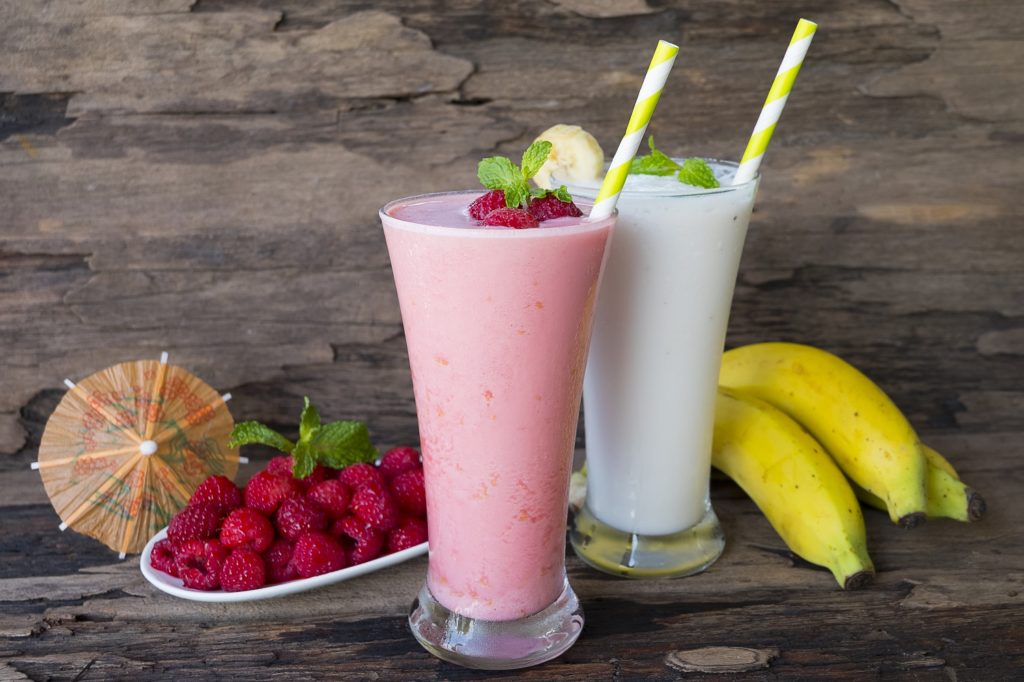I suppose that the majority of my readers would shamelessly admit that they’ve enjoyed many, many milkshakes in their lifetime. I too am guilty. (Smile) As a matter of fact, milkshakes are one of my favorite childhood memories. I especially remember the fun of going to the corner drugstore with my girlfriends to sip on one of those luscious-tasting treats while giggling about silly things like boys! In fact, I’m old enough to remember soda fountains at every drug store. Yes, those are the things that make great memories.
What made me decide to write about this particular subject was the realization that our current milk supply is tainted with things we couldn’t have imagined in the earlier days of my life. (Sigh) Although the milk was homogenized and pasteurized, at least the cows weren’t inoculated with massive amounts of hormones and other poisons.
The 2007 article “Modern Milk” from Harvard Magazine outlines the research of Mongolian physician Ganmaa Davaasambuu. She explains that while milk was once thought of as “nature’s perfect food,” it has declined in popularity over the years.
Davaasambuu believes the reason for this decline is that “high levels of hormones found in commercially produced milk may be harmful to human health. Estrogens and other growth factors have been implicated in the development of hormone-dependent cancers: those affecting the prostate, testes, ovaries, breasts, and uterus.”
Further, she is also troubled that “milk-producing cows in commercial dairies, through use of artificial insemination and high-quality winter feed, are kept pregnant and lactating 300 days a year. ‘Cows are like humans,’ she explains. ‘When they get pregnant, the estrogen levels in their blood, milk, and urine increase…This made me wonder—since the cows are pregnant all the time, the hormone levels in their milk should be really high.’” (Emphasis mine)
Hopefully, this information will help you reflect on the milk you’re putting on your table and/or using in your favorite dairy recipes. If you enjoy milkshakes, allow me to introduce you to a safe, homemade option using raw milk later in this blog post, as well as information about how you can access safe raw milk.
But first I would like to offer an interesting story from the 1943 article “Pasteurized Milk—A National Menace,” written by James C. Thomson, which I first referenced in my recent blog post “Raw Milk Awakening!”
I highly recommend reading this article in full, but below is an excerpt of the introduction. It begins with a question to the author from a local schoolmaster. As the question makes clear, at one time school-age children were provided with raw milk:
“Formerly we had our milk from a local dairy coming from the farm unpasteurized. As I noticed a difference in the quality of the milk during the last few weeks, I found out that lately we are being supplied with pooled and pasteurized milk. The dairy is quite willing to supply us again with milk coming from a local farm [unpasteurized] and has done so at my request for a week. The milk is much creamier and gets sour naturally again (we use sour milk as a dressing with the salads).
“The pasteurized milk we found could not be soured; it just went bad under the same conditions. Accordingly, I am very pleased with this change. On the other hand, one hears so much about increasing tuberculosis among the cows in the country that I wonder whether we should risk it (giving the children unpasteurized milk).
“The herd from which the milk comes is not regularly examined…Would you kindly state your opinion on this matter, i.e., whether you think bovine tuberculosis is infectious to human beings—or any other reasons why we should not risk using the unpasteurized milk. Our children get about 1½ pints of milk per day at present—nearly all of it raw—and the children are happy and full of life and activity. We are anxious to hear your opinion on this problem.”
Personal note: I found this article in the SRP Historical Archives. There are currently over 400 free articles in the Archives that would be of great interest to the more scientifically minded.
Early History of the Milkshake
According to this blog post at SodaJerks.net, “The word ‘milkshake’ first appeared in print in 1885. At this time, milkshakes were an eggnog-like drink made with whiskey. However, by the turn of the century milkshakes were no longer alcoholic and were made with flavored syrups, such as vanilla, chocolate, or strawberry. By 1930, milkshakes referred to the sweet treat we know today, with ice cream, milk, and syrup blended together.”
Milkshake Tips from the Traditional Cook
#1. Remember that it’s all about the ice cream. The number-one ingredient in a healthy milkshake is the ice cream you use (milk is also used but in small quantities). The temperature of the ice cream is also important, especially if you don’t want your shake to turn out runny. If it’s been in the freezer, make sure to soften it first. Different websites explain your ice cream should be about 20°F. If you can’t scoop it easily, it’s probably too cold. In my recent blog post “Ice Cream Toxicity,” you’ll find recommendations for safe ice cream brands from the Weston A. Price Foundation Shopping Guide. There’s also a tip from Maureen Diaz for a quick and easy way to make your own ice cream.
#2. Use quality vanilla. Vanilla is the best flavor to use as a base since you can then simply add natural fruits or other flavorings (and avoid the fake flavors in commercial ice cream). Read my blog post “The Vanilla Queen” to learn more about real vanilla. I always add at least half to one teaspoon to my approved ice cream from the list I mention above.
Where Do I Get Raw Milk?
See Raw-Milk-Facts.com to find much more detailed information on the nutritional aspects of raw milk. Hopefully by now you’re convinced that raw milk is the only real milk, and it’s worth it to find some in your own area. Check out RealMilk.com to locate raw milk resources listed by state. And see my post “Raw Milk Awakening!” for raw milk smoothie recipes.
The following easy-peasy basic raw milkshake was inspired by Taste of Home, but I’ve added a few Traditional Cook touches.
Traditional Cook’s Raw Milkshake
Ingredients
⅓ cup raw milk
1½ cups quality vanilla ice cream (see recommendations here)
½ teaspoon real vanilla from the Vanilla Queen
Optional additions:
1 tablespoon Calcifood Powder (to augment bone health) or Cyrofood Powder (a powerful multivitamin supplement)
¼ cup fresh blueberries, strawberries, pitted cherries, or other fresh (not frozen) fruit
½ banana (go easy on bananas as they are a high sugar fruit)
½ teaspoon or to taste carob powder (for a chocolatey taste that won’t stimulate the adrenals)
Instructions
- Place all ingredients in a Vitamix or blender.
- Gently mix until all ingredients are combined, being careful not to overmix.
- Pour into tall, fancy milkshake glasses and enjoy.
Afterthoughts from the Traditional Cook
Delicious
We all enjoy delicious food,
Makes us happy, fixes our mood.
It’s all about the juicy taste,
Doesn’t matter, where the food is placed.
We should consider, nutritional support,
We shall need it, if we engage in a sport.
Energy; food provides – plenty
Need a bit more, if we’re over twenty.
A great dish, we should all savor,
Eat slowly, as we taste the flavor.
Choose our very favorite cuisine,
Is it red? Or is it green?
—tree.cards
Disclaimer from Maria Atwood, CNHP: I am a Certified Natural Health Professional, CNHP, not a medical doctor. I do not diagnose, prescribe for, treat, or claim to prevent, mitigate, or cure any human diseases. Please see your medical doctor or health practitioner prior to following any recommendations I make in my blog posts or on my website.
Images from iStock/jacoblund (main), monkeybusinessimages (children with milkshakes), jacoblund (man preparing milkshake), Amguy (milkshakes in cups).
 Get self-health education, nutrition resources, and a FREE copy of A Terrible Ten: Health Foods That Ain't ebook.
Get self-health education, nutrition resources, and a FREE copy of A Terrible Ten: Health Foods That Ain't ebook.





